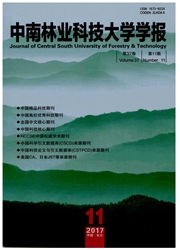

 中文摘要:
中文摘要:
荒漠河岸林是干旱荒漠区宝贵的天然林资源,而水盐格局制约着物种的形成、进化、演替和分布。基于塔里木河上游不同生境荒漠河岸林6个样地750个土壤样品采集和6.0 hm2群落调查,研究了土壤水盐的空间变化特征及其对优势种群的影响。结果表明:上游荒漠河岸林土壤含水量随深度而增加,40 cm土层之下变化剧烈,土壤总盐含量变化与之相反,表层积盐明显;不同生境土壤水盐含量变异差异明显,均属中强度变异,垂直方向土壤总盐含量变异性弱于含水量;各层土壤水盐含量从上段至下段逐渐减少,自然和人为因素共同作用导致区域土壤水盐空间分布差异;低水多盐生境抑制荒漠河岸林优势种群的生长发育,致使种群更新资源匮乏,稀疏,林分偏老,死亡率高,种群明显衰退;不合理的人类活动是造成荒漠河岸林优势种群生长受抑和植被退化的主要因素,长此以往,上游荒漠河岸林将快速衰退演替而消失。提出优势种群生存的半致死地下水位(GWD50)为5.5 m左右,此可作为流域植被恢复与生态输水的理论依据。
 英文摘要:
英文摘要:
Desert riparian forest is preciously natural forest resources in desert arid areas, and spatiotemporal pattern of water and salt restricts the formation of species, evolution, succession and distribution.750 soil samples were collected and dominant populations were investigated at desert riparian forest by contiguous quadrate methods under different habitats in the upper reaches of Tarim river. The object of this study is to investigate the spatial variation and effects of soil water-salt content on dominant populations. The results indicated that the soil water content was increased with the depth and the change was sharp from 40 cm to 100 cm, while the soil salt content was decreased with the depth and salt accumulated significantly in surface layer soil. Significant water and salt variations were found in all layers and different habitats, and variability of soil water content was higher than that of salt content in vertical direction, but ranges of their variation coefficients were belonged to medium variation. Both natural and human factors resulted in the evident spatial variations of the decreasing soil water and slat content from the upper section to the lower section in the study area. The growth of dominant population was stressed at low water and high salt habitat; it resulted in lack of regeneration resources, sparse stands, high mortality rate and obvious declining. Unreasonable human activity is main factors of dominant population degeneration and environmental deterioration. In this way, desert riparian forest will decline rapidly and die out in the future. The half lethal groundwater depth(GWD50) was proposed about 5.5 m, this could be as the theory basis of vegetation restoration and ecological water conveyance.
 同期刊论文项目
同期刊论文项目
 同项目期刊论文
同项目期刊论文
 期刊信息
期刊信息
